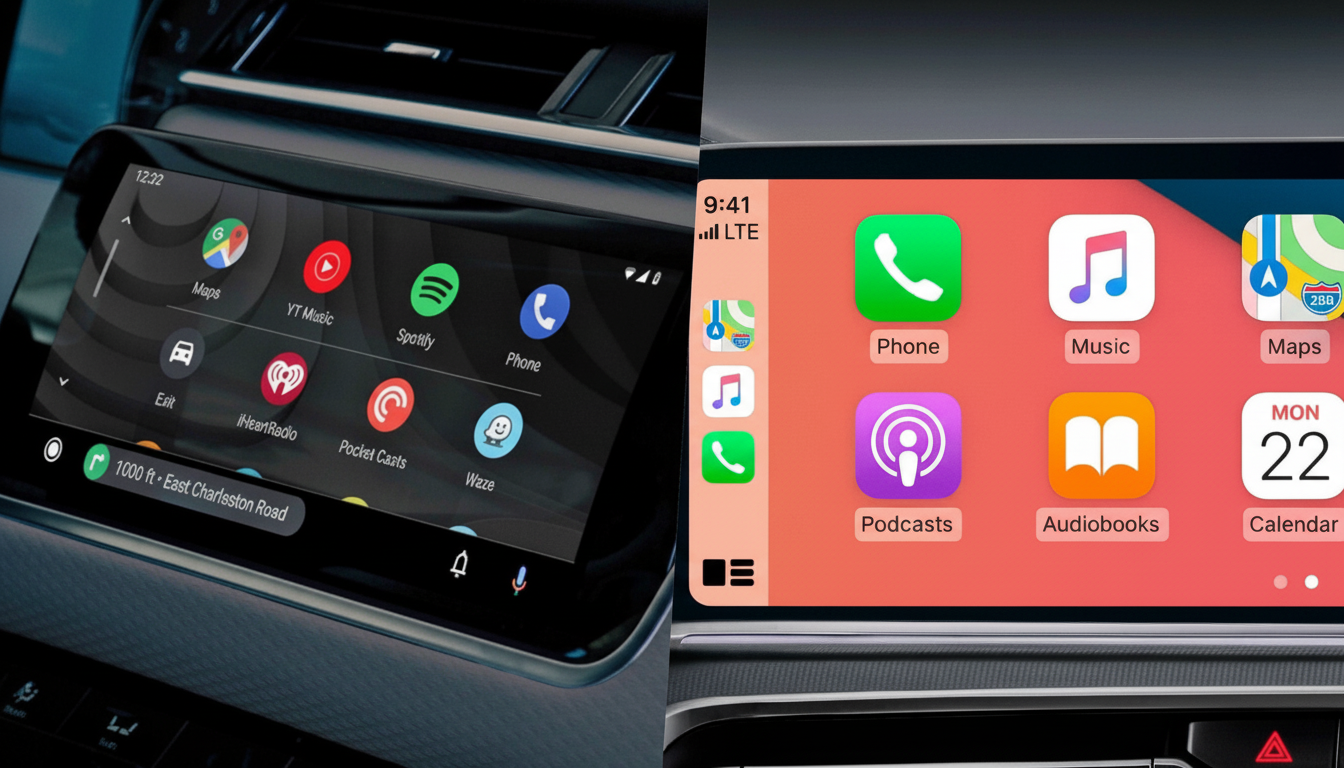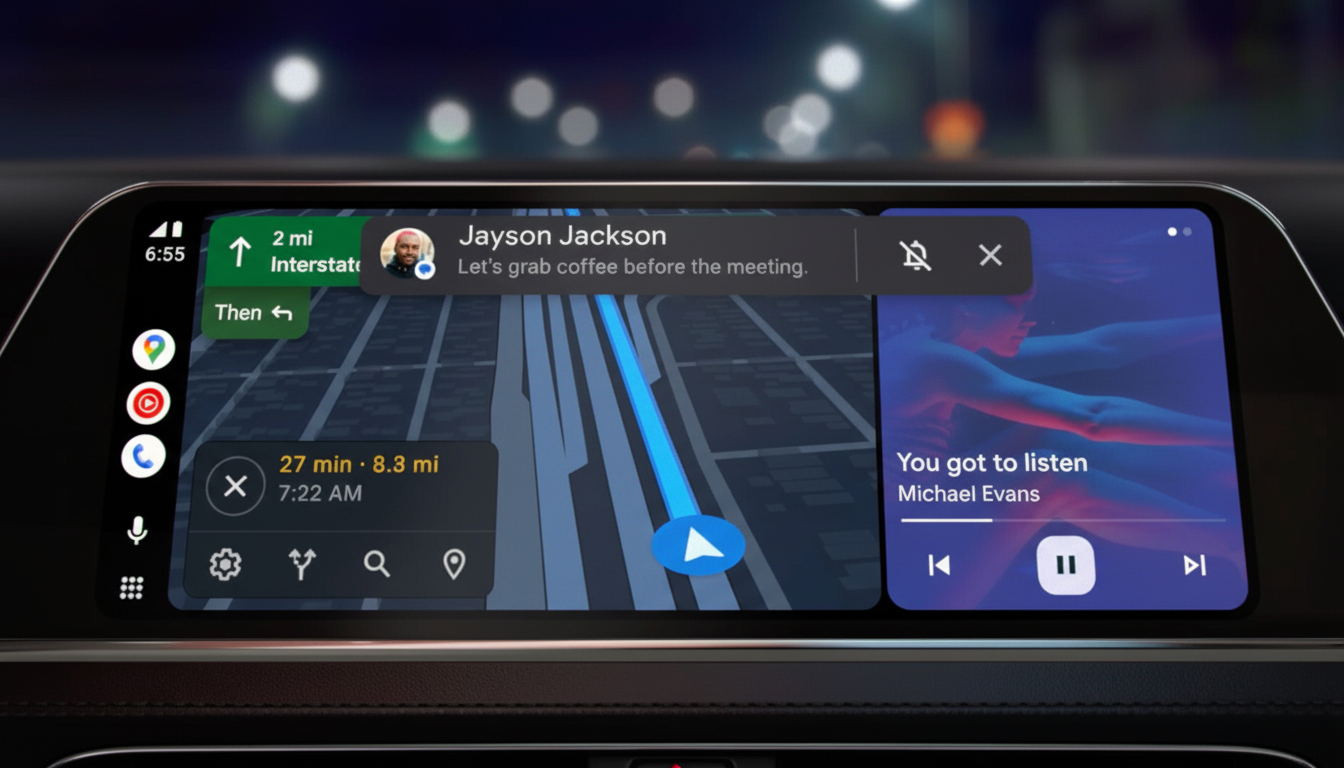Android Auto is getting ready to add home screen widgets to the in-car dashboard. This would be an important step that would allow for greater personalization and potentially reduce the number of times you have to use your phone.
The feature, codenamed “Earth” in an early beta version of Android Auto, allows drivers to pin a widget from a phone app directly to the home screen of the car's infotainment system. It's all still experimental, but it already offers a glimpse into the way Google wants to combine familiar features of Android phones with the limitations of safe, car-friendly UX.


What's coming to the Android Auto Dashboard?
The current design of the home screen for Android Auto is divided into two parts.
The widget area covers about 35-40% of the width and the primary feed is about 60-65%. You can only have one widget active at a time, and selecting a new widget replaces the current selection, another indication of how careful Google is about your distractions.
Importantly, these are the same widgets you're familiar with from Android apps on your phone. This includes weather tiles, clocks, calendars, and some media controls, as long as they comply with Android Auto's layout guidelines and usage rules.
In the beta we tested (version 5.6.154404-release.daily), a new settings option called “Customize Earth” available during setup launches a widget manager called Widget Companion. When you tap on it, a plus button will appear. Tapping it will display all apps that can display at least one widget. Select an app and widget and it will appear on the home screen.
A scaling slider allows you to change the size of the widget in the panel. You won't find a freeform drag-and-drop or drag-and-multi-widget layout yet, but there is a simple delete control to remove the current widget. It's a sort of spartan design, albeit an intuitive one, obviously designed to allow for quick setup – and keep fiddling to a minimum.
Early app compatibility and current limitations
Because the feature is so new, the behavior varies depending on the app. Pixel Weather works best and displays real-time conditions cleanly when location permission is granted. Google Clock's stopwatch app – it turns out the company has its own – is available, as is the calendar widget that lets you switch between months – the level of clarity that Android Auto offers.
Media widgets are a mixed bag. A Spotify widget can display some transport controls, but interactions with metadata and graphics sometimes attempt to launch the phone app, which rightly blocks Android Auto with an on-screen warning. The same limitation applies to information-filled widgets like Gemini or quick-access note widgets intended to be passed to their full apps.


The form factor is another challenge. Many Android widgets are designed for horizontal or square canvases. On the side walls of the car, some elements are cut off or do not use all the space. Currently the only way to perfect the fit is with the scale slider. This may mean that app developers should create their layouts for in-car viewing.
The narrow limits of interactivity are no coincidence. Android Auto uses templates and limited touch targets to comply with driver distraction guidelines, which include US National Highway Traffic Safety Administration guidelines. By gating all deep links to full phone apps and pinning widgets into a panel, the widget experience reduces gaze time variability and interaction effort.
Expect Google to rely on simple, clear information that is updated where it is. This works well with the way Android's native widgets – RemoteViews – work, and with the way Android Auto's current taskbar widgets give you quick access to your audio and navigation apps. The end game is something like a curated widget experience that balances flexibility with repeatable safety behavior across cars, screens and input methods.
Comparison with CarPlay and other competitors
Apple's CarPlay currently doesn't offer the ability to pin standard iOS home screen widgets in the car, relying instead on app-controlled dashboard maps.
If Android Auto brings phone widgets to the dashboard with some clearly defined safety guardrails, it could provide a more personal, at-a-glance layer without requiring developers to create entirely new UI components for the car.
The change also continues the work of Google's Coolwalk redesign, which made split-view layouts commonplace in Android Auto. With the Android Auto phone app reporting more than 5 billion installs in Google Play, even small improvements can have a big impact on behavior, making routine activities like checking the weather or resuming playback faster and with fewer taps.
What to consider next as Android automatic testing continues
The Earth codename and sparse controls suggest this is more of a behind-the-scenes experiment than a ready-to-launch feature. The to-do list is still clear: better widget scaling, robust media metadata processing, and secure interaction patterns that never migrate to the phone.
For developers, optimization likely includes previewing widget layouts in narrow, car-friendly windows and limiting tap targets to actions that can be safely performed using Android Auto. The promise to drivers is simple but substantial: the right information where you need it, without having to dip in and out of apps. If Google nails the landing, Home Screen Widgets could be one of the most useful updates to Android Auto since its rework for split-screening.